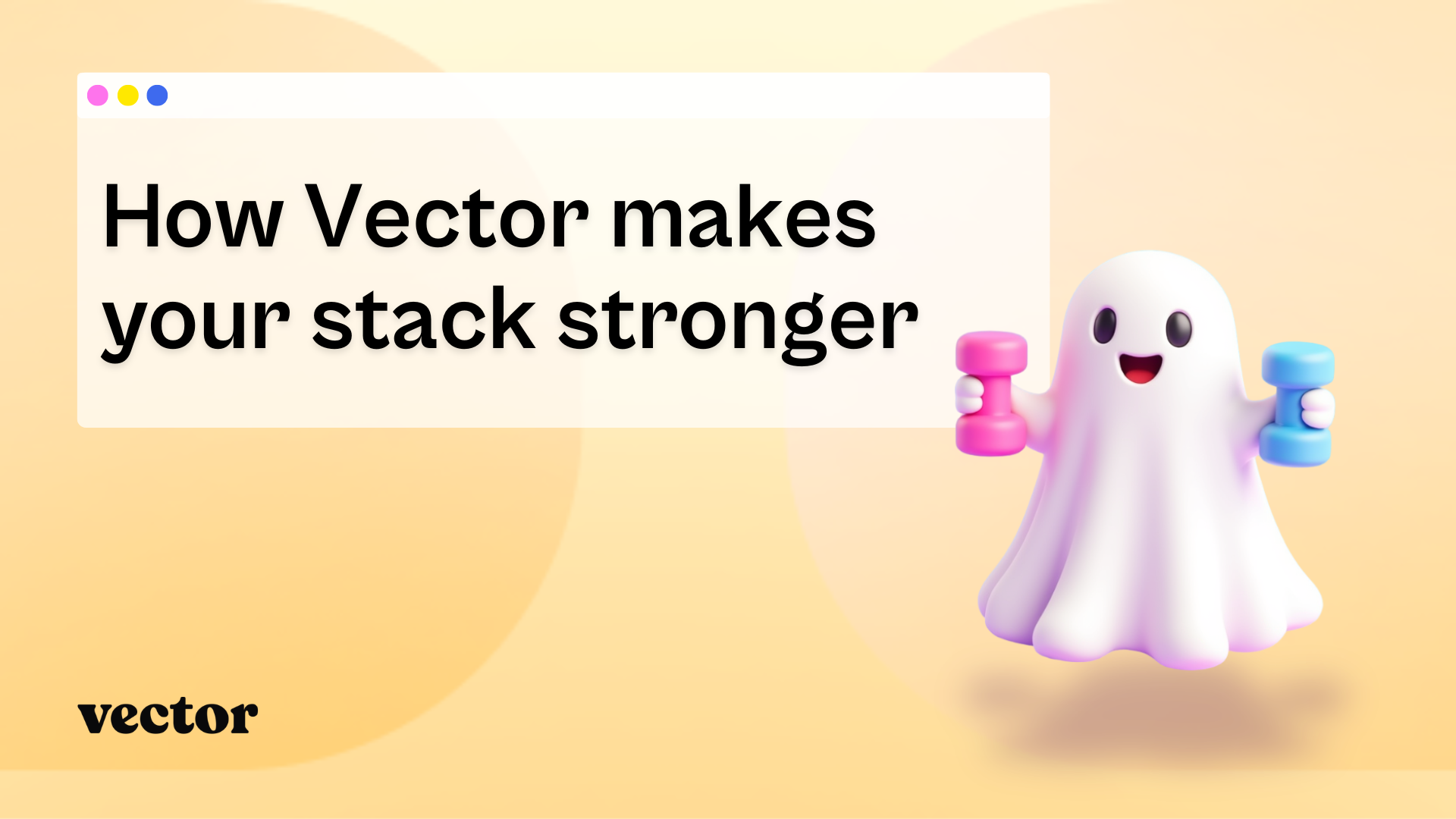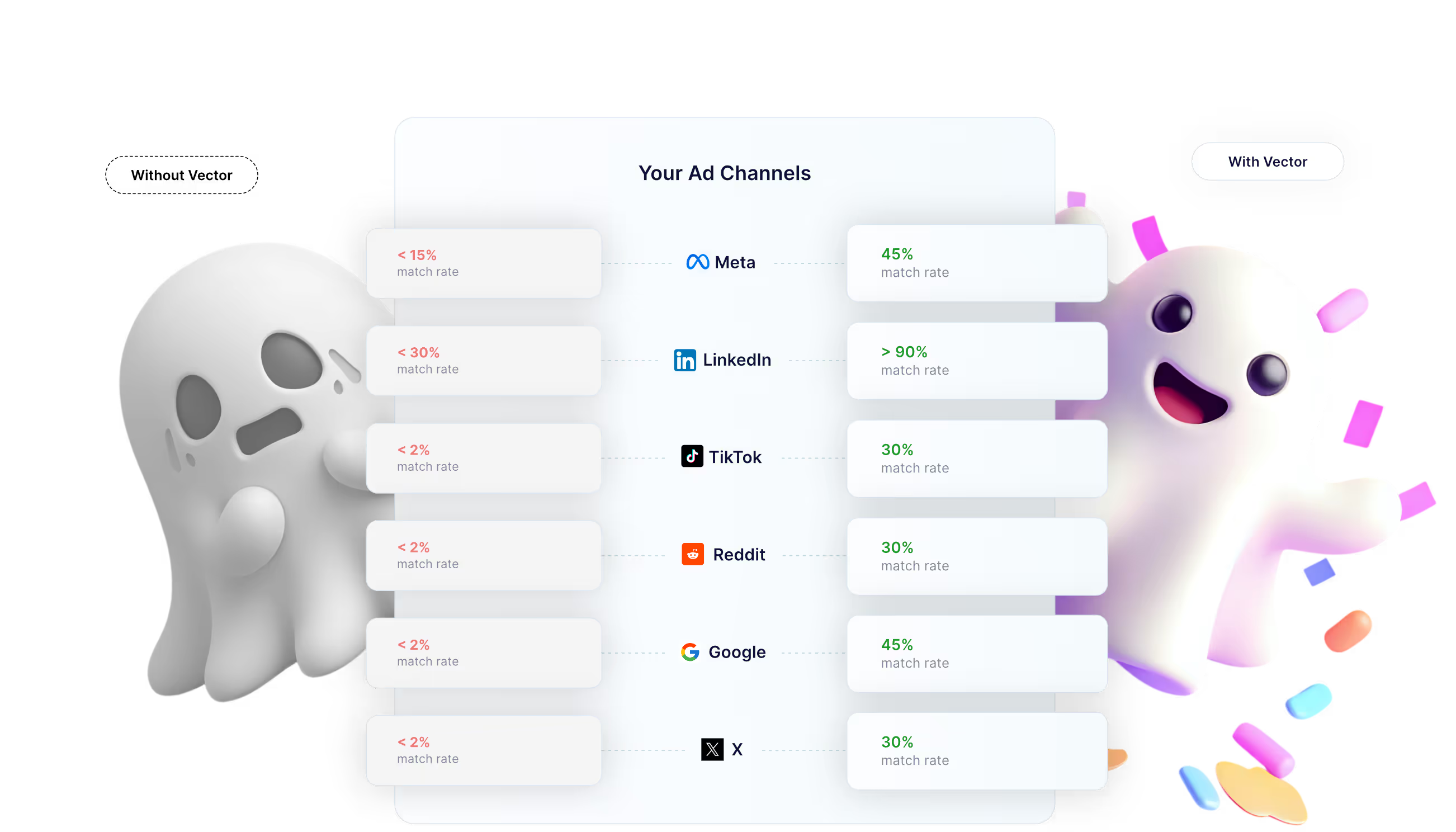How Vector makes your stack stronger


If you’ve been in B2B marketing long enough, your tech stack looks like the Marvel Cinematic Universe.
- 6sense and Demandbase? Powerful, but mostly focused on the account-level view.
- Metadata, Influ2, Primer? Fun for ad activation, but each one living in its own weird galaxy.
- ZoomInfo and Bombora? Intent data and enrichment magic, but often locked behind portals you can’t fully control.
- Clay and UserGems? Awesome at enrichment or buyer intelligence, but need other tools for the full battle.
It’s a lot of sequels. A lot of universes. And you’re left trying to stitch them together with duct tape and APIs.
Let's face it:
Marketers today use a mix of ABM suites, ad engines, data providers, and enrichment tools. Each plays a role but too often, they operate in silos. That means signals you care about like site visits, competitor research don’t line up, campaigns go stale, and teams don’t know which contacts actually matter.
Vector flips that.
The truth is, today’s buyers don’t move in neat, trackable ways. They research in LLMs, Reddit, and Slack channels. They don’t leave tidy cookie crumbs. And that’s why even with powerful tools, teams keep missing pipeline targets.
While Vector doesn’t replace everything in your stack, it makes tools better by giving you contact-level visibility and activation. Think of it as the missing layer that pulls your ecosystem together.
.gif)
The problem with “account-only”
Platforms like 6sense are great at identifying surging accounts and giving you a high-level view. But accounts don’t click your ads or fill out forms. People do.
Without contact-level precision, ABM becomes guesswork. You may know Acme Corp is “in market,” but you don’t know which actual buyer is raising their hand until it’s too late.
.gif)
👉 ABM is the strategy. Contact-level is the unlock.
Vector connects account-level signals to named contacts and syncs them into your CRM in real time, so Marketing can run precise campaigns and Sales can see exactly who’s active. With Vector's Signal-Driven Ad Audiences, you can build real-time audiences and run ads to known contacts, not anonymous clicks.
That means instead of a black-box score, your team sees that Sarah Johnson, VP of RevOps at Acme, visited your pricing page twice this week and can push her straight into LinkedIn campaigns or alert Sales instantly.
.png)
The gap in “ad engines”
Ad automation platforms like Metadata (with MetaMatch), Influ2, and Primer are powerful execution layers. They help you test creative, optimize budgets, and push audiences into channels without manual exports.
But here’s the catch:
they still depend on the quality of the lists you feed them. MetaMatch pulls from 10+ data sources, previews segments, and pushes them into campaigns but it’s still a marketer building the list and hoping it’s the right one.
.gif)
👉 Vector flips that model.
Instead of static lists, Vector builds dynamic, contact-level audiences that update in real time as buyers visit your site, change jobs, or research competitors and sync directly into your CRM. Campaigns stay fresh, ad engines deliver with precision, and Sales/RevOps always see the latest contacts in pipeline, not stale exports.
Put simply: ad engines scale delivery. Vector makes them precise.

The bottom line
Data providers like ZoomInfo and Bombora cast the wide net. Enrichment platforms like Clay and UserGems add useful intelligence.
But none of them solve the last-mile problem: moving from signals like job changes, site visits, competitor research, closed-lost to action with real people.
That’s where Vector comes in:
- See who’s active. Named contacts, not just accounts or models.
- Turn it into precise audiences. Smaller, higher match rates that hit harder.
- Activate instantly. Push to LinkedIn, Google, Slack, Salesforce, HubSpot without CSV hell.
Your stack isn’t going away and it shouldn’t. Each tool plays a role.
But without a contact-level ads engine, you’re left with broad targeting, lagging signals, and wasted spend.
ABM strategy works better with Vector. Ad engines hit harder with Vector. Enrichment tools get activated with Vector.
Because at the end of the day, accounts don’t engage. People do. And contact-level precision is the difference between wasted spend and pipeline you can prove.

Instead of a scattered multiverse, Vector helps your stack work like the Avengers: stronger together, with real people at the center.
Ad targeting
doesn't have to be
a guessing game.
Turn your contact-level insights into ready-to-run ad audiences.
Frequently asked questions



